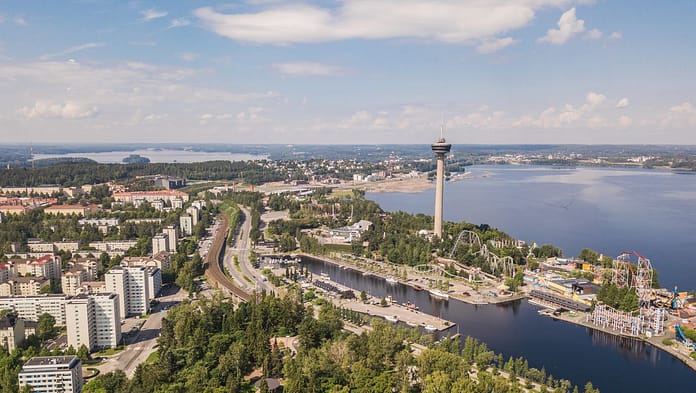European Environment Agency European Economic Area exposed to particulate matter in 323 cities in 26 EU countries as well IslandAnd the Norway and the Switzerland Upvoted – New out Air quality ranking. So the cleanest air is in Swedish ume And the Tampere in Finland.
also in Funchal On the Portuguese island of Madeira, in the capital of Estonia Tallinn as well as in norwegian Bergen Particulate pollution has been particularly low in the past two years. However, the bottom of the list can mostly be found in Poland And in northern Italy.
Overall, the European Economic Area certifies 127 cities with good air quality. In 123, the pregnancy is considered moderate, in the remaining 73 it is considered bad or very bad. This rating refers to average fine dust (PM2.5) air pollution in 2019 and 2020. Anyone below the World Health Organization (WHO) recommended value gets “good”: the World Health Organization recommends that – 10 days of exposure Micrograms of fine dust (PM2.5) per cubic meter of air, which is more stringent than the EU value. Who breaks the EU annual limit of 25 micrograms – this applies to five cities in Poland, Croatia And the Italy – It gets “too bad”.
According to the analysis, 61 percent of cities exceed the WHO standard, said the EEA’s head of air pollution, environment and health, Catherine Jansleben. According to this, it is only 2 percent above the annual EU limit.
This is how German cities work
Göttingen has the cleanest air among the 52 listed German cities: Lower Saxony ranks 29th, followed by Freiburg (45th), Darmstadt (46th), Lubeck (50) and Hanover (56). It and 25 other cities in Germany are said to have good air quality, while 22 other cities are rated as average – with Berlin As the German bottom light is 219th.
No German city fell into the “bad” or “very poor” rating. Many major German cities such as Cologne It is not rated, however. According to the EEA, this may be due to the fact that the measurement stations or certain data are missing.
Almost all Europeans suffer from air pollution
As already shown by the EEA report at the end of 2020, the air quality in Europe Significantly improved over the past decade, among other things due to lower emissions in transportation and energy supplies. As a result, nearly 60,000 people died prematurely each year from exposure to particulate matter compared to 2009 and 2018.
However, almost all Europeans still suffer from air pollution from fine dust, nitrogen dioxide and ground ozone, especially in cities. According to estimates by the European Economic Agency, more than 400,000 people died prematurely in 2018 in 41 European countries as a result of exposure to these pollutants, including tens of thousands in Germany.
Once again, the European Economic Area indicated that air pollution remains a serious problem and a real health risk in many European cities. Expert Gansleben said fine dust remains the number one air pollutant with the greatest impact on premature mortality and disease.
“While air quality has improved dramatically over the past few years, air pollution remains stubbornly high in many cities in Europe,” explained Hans Bruininckx, Executive Director of the European Economic Area.



